Welcome back to FABRIC INSIGHT, a series delving into the background of Engineered Garments fabrics. This time, the focus is on Beige Linen Glen Plaid, a lightweight, dapper fabric with a fascinating history.
The Glen Plaid further illustrates Scotland's commanding influence on the development of textiles. The fabric's intricate windowpane pattern features checks formed at each angle of micro houndstooth weaves, which then finish with vertical and horizontal stripes. Unlike cashmere, Fair Isle, or the ancient tweed fabrics that the Celtic people of Scotland produced centuries ago, it is a relatively new pattern.
Glen Plaid entered the Scottish Register of Tartan records on January 1, 1840, under the name "Glenurquhart Estate Check", named for the eponymous glen that ran through the Balmacaan estate. The design is credited to an Elizabeth Macdougall, who resided in Lewston, a small village at the foot of the glen.
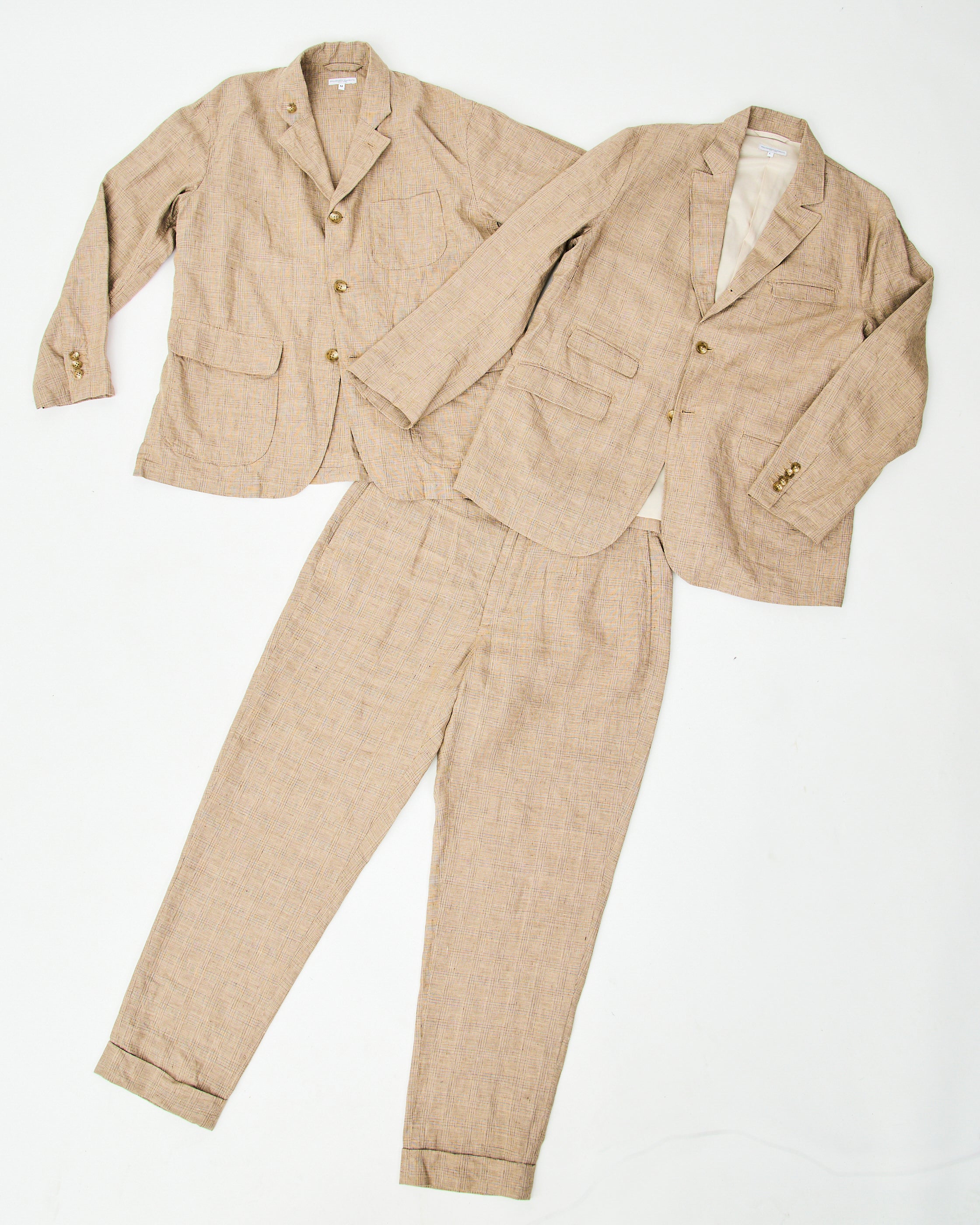
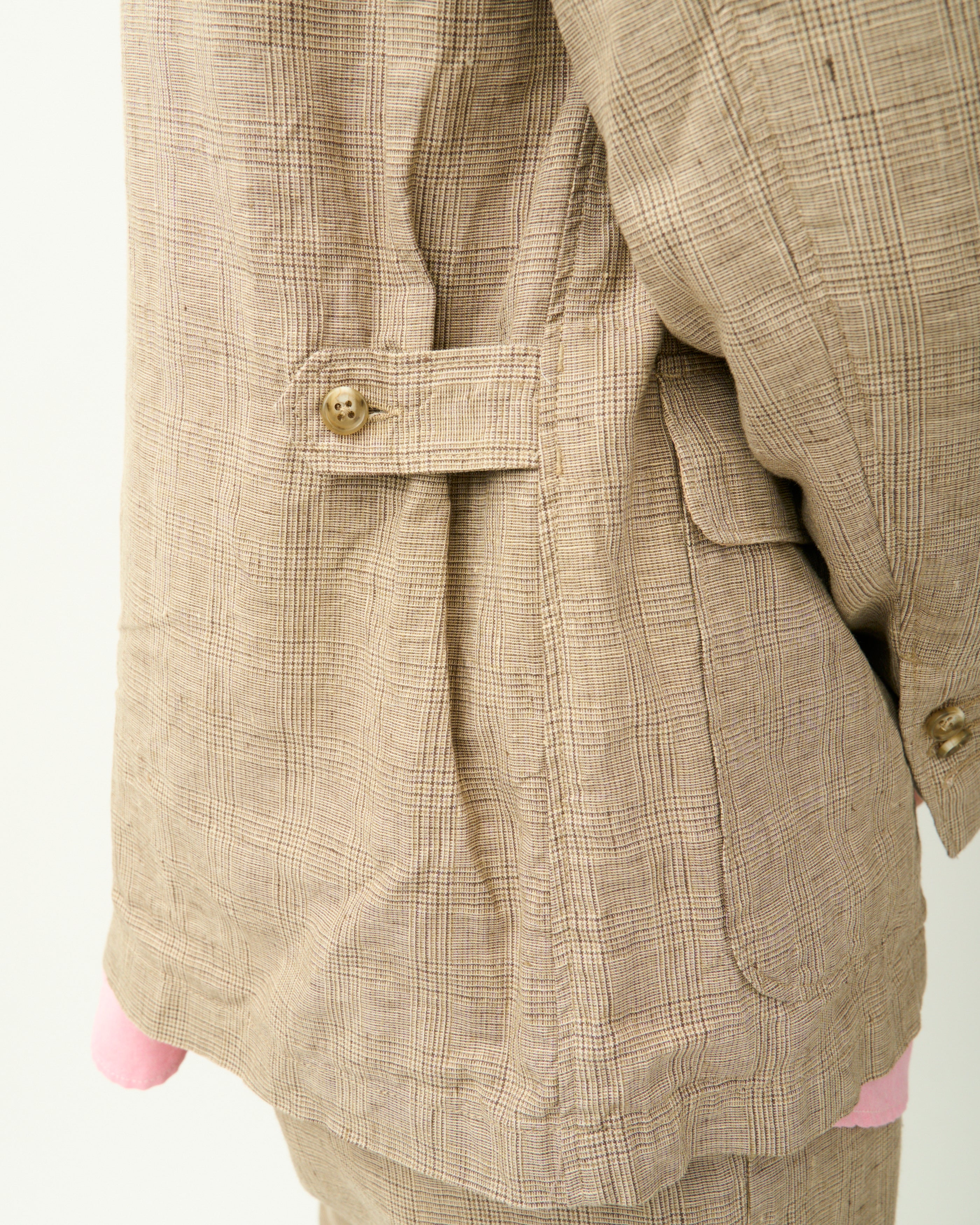
The first widespread use of the fabric came shortly after its registration. Caroline Stuart, Countess of Seafield, a Scottish aristocrat and proprietor of the Balmacaan estate, was not yet ten years old when she requested new attire for the ground staff. Searching for a fabric that could withstand the wind, rain, and cold of the Northern Scottish climate, she asked for uniforms made from the smart Glen Plaid check design worn by men in the nearby villages.
It remained a local fabric for a time, worn only by those who worked on the estate or resided nearby. It wasn't until Edward VII, the eldest son of Queen Victoria, and Prince of Wales, visited the Balmacaan estate on a hunting trip that the fabric grew in popularity. Edward VII wore the Glen Plaid so often that it was often called the "Prince of Wales" check, even after he ascended to the throne. In the first half of the 20th century, the roguish Edward VIII played a part in further popularizing the style, commissioning versions of his grandfather's favorite fabric in checks of blue and red.
By the 1950s, Glen Plaid was known worldwide, exemplified by 1955's North by Northwest, which stars Cary Grant as a clueless but stylish ad executive who wears a grey glen plaid suit as he stumbles through a plot of international intrigue.
The Engineered Garments Linen Glen Plaid showcases this complex history through the brand's unique lens. Designer Daiki Suzuki selected a small glen plaid check of grey, white, and brown lines. The pattern is so slight and subtle that it can appear as a single color from a distance, a trait Daiki refers to as "semi-solid." This fabric features 100% linen construction, providing a natural slub and a slightly stiff touch, making it ideal for summer suiting.
The Spring Summer 2024 Beige Linen Glen Plaid is a lightweight fabric with remarkable depth.
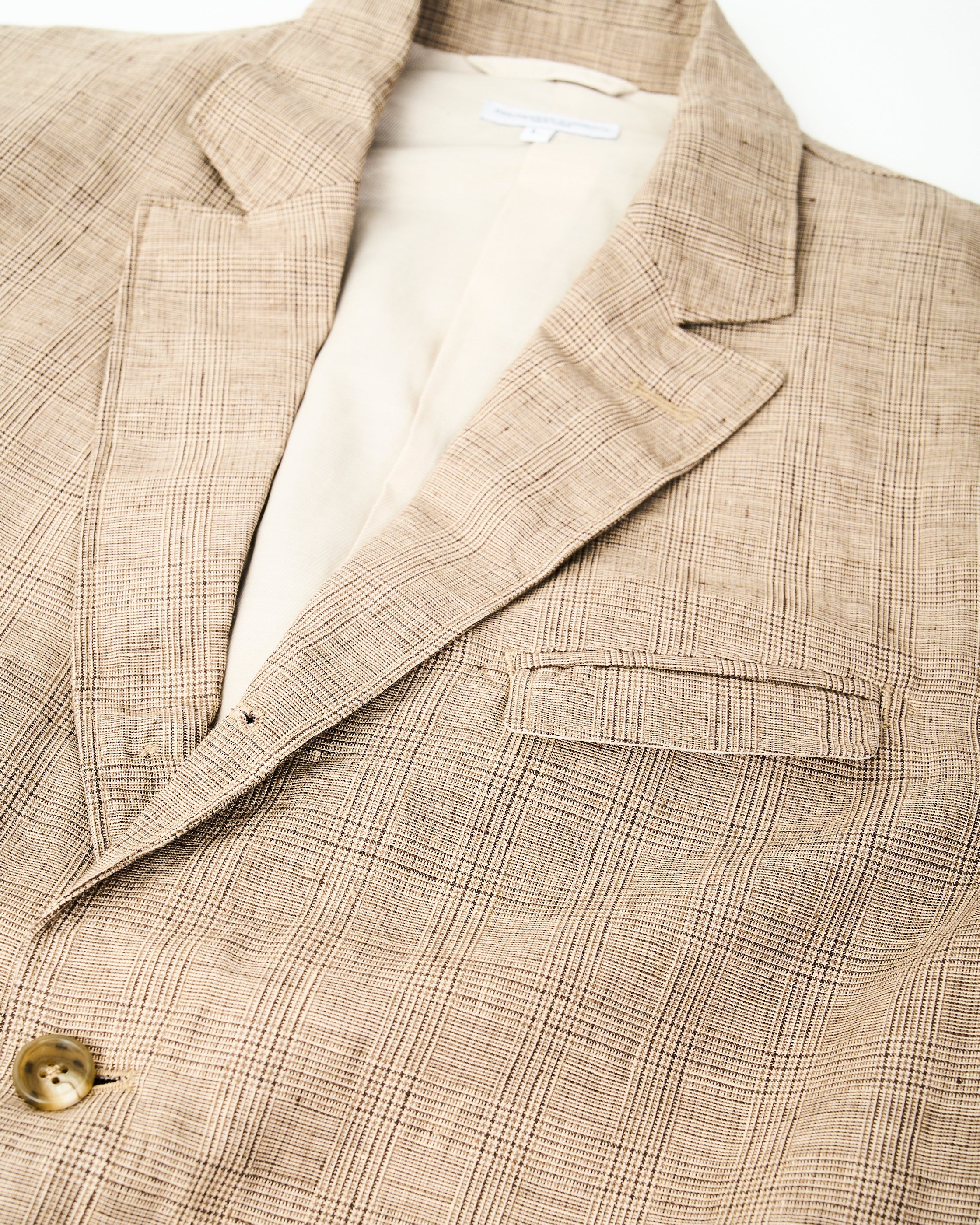
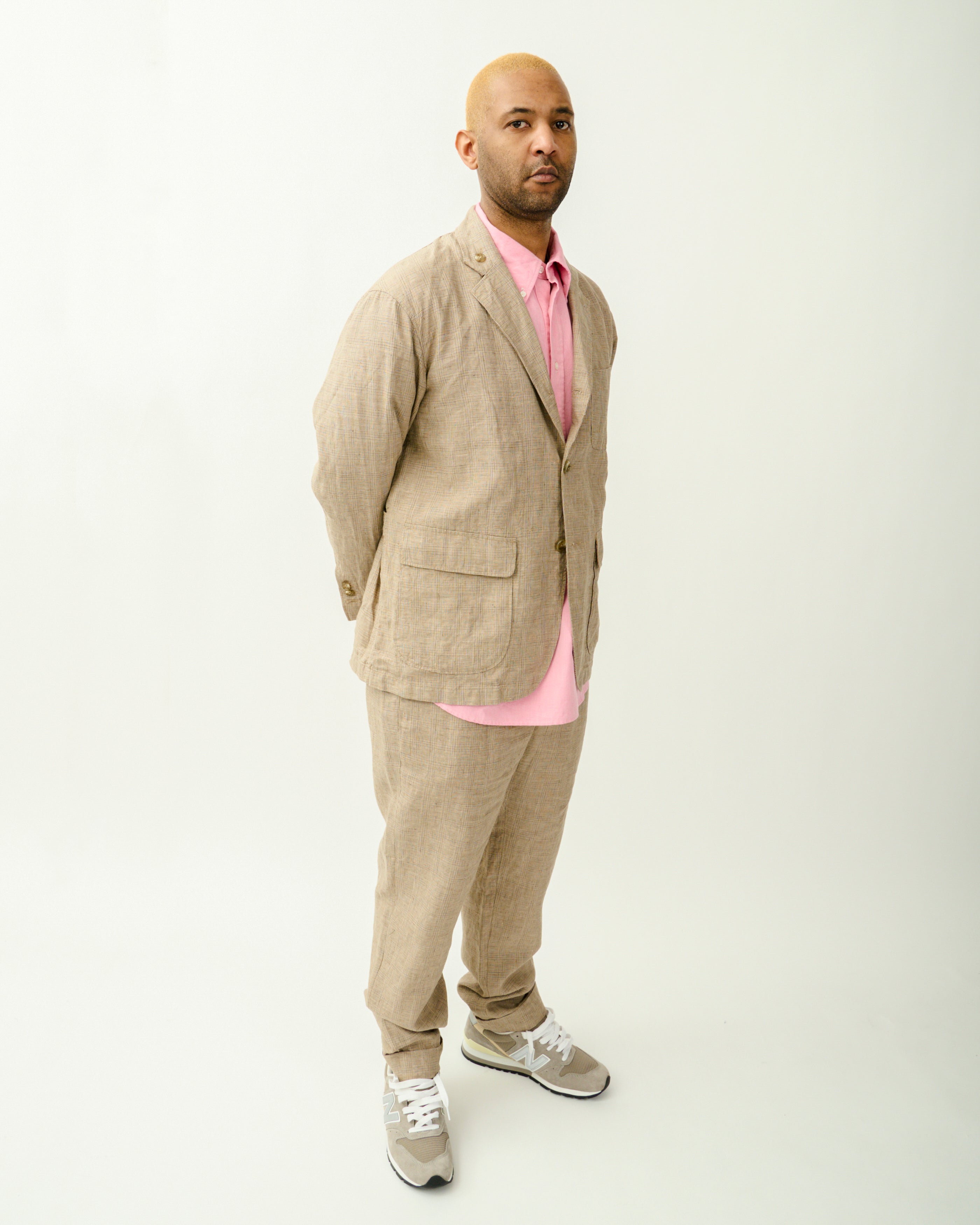
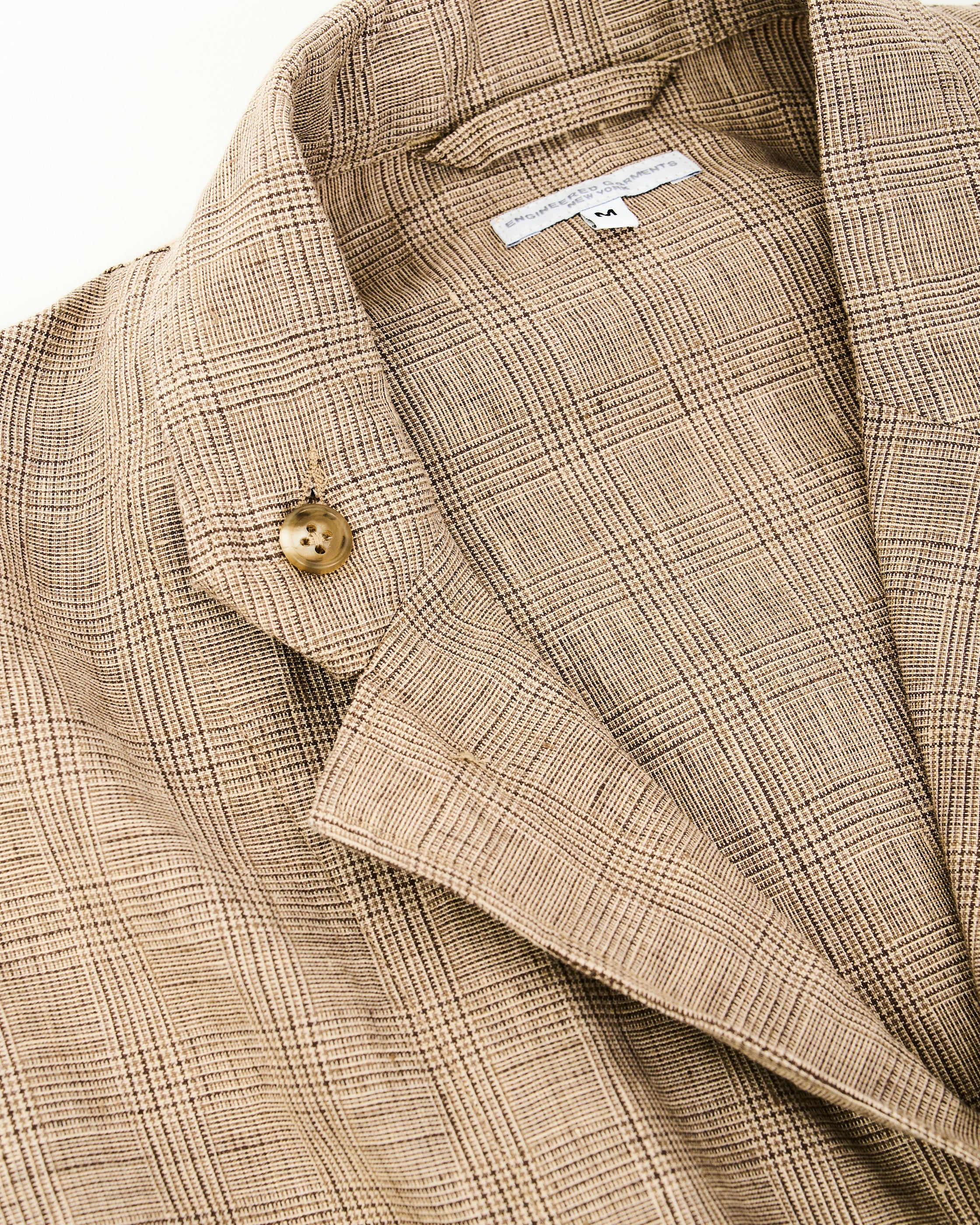
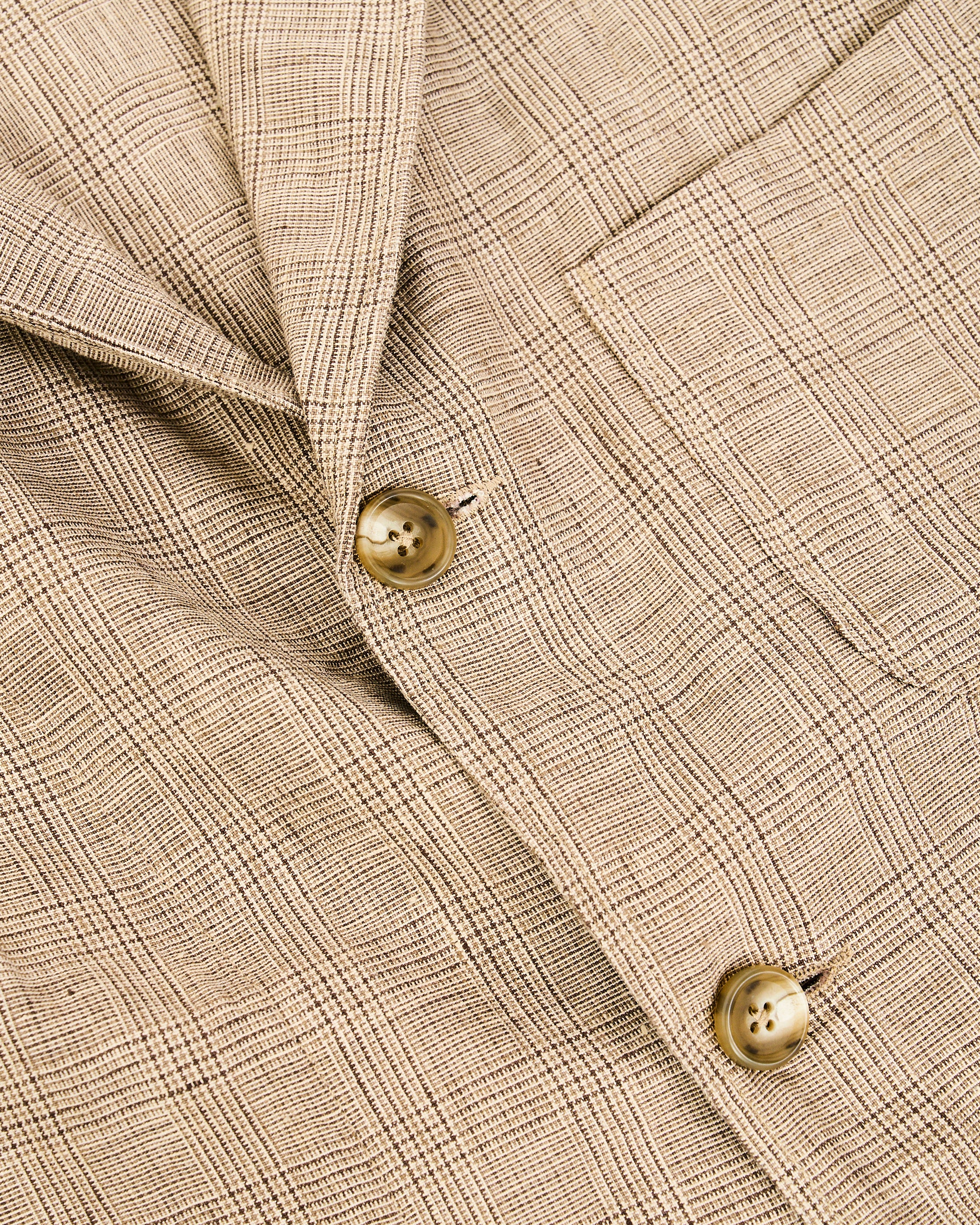

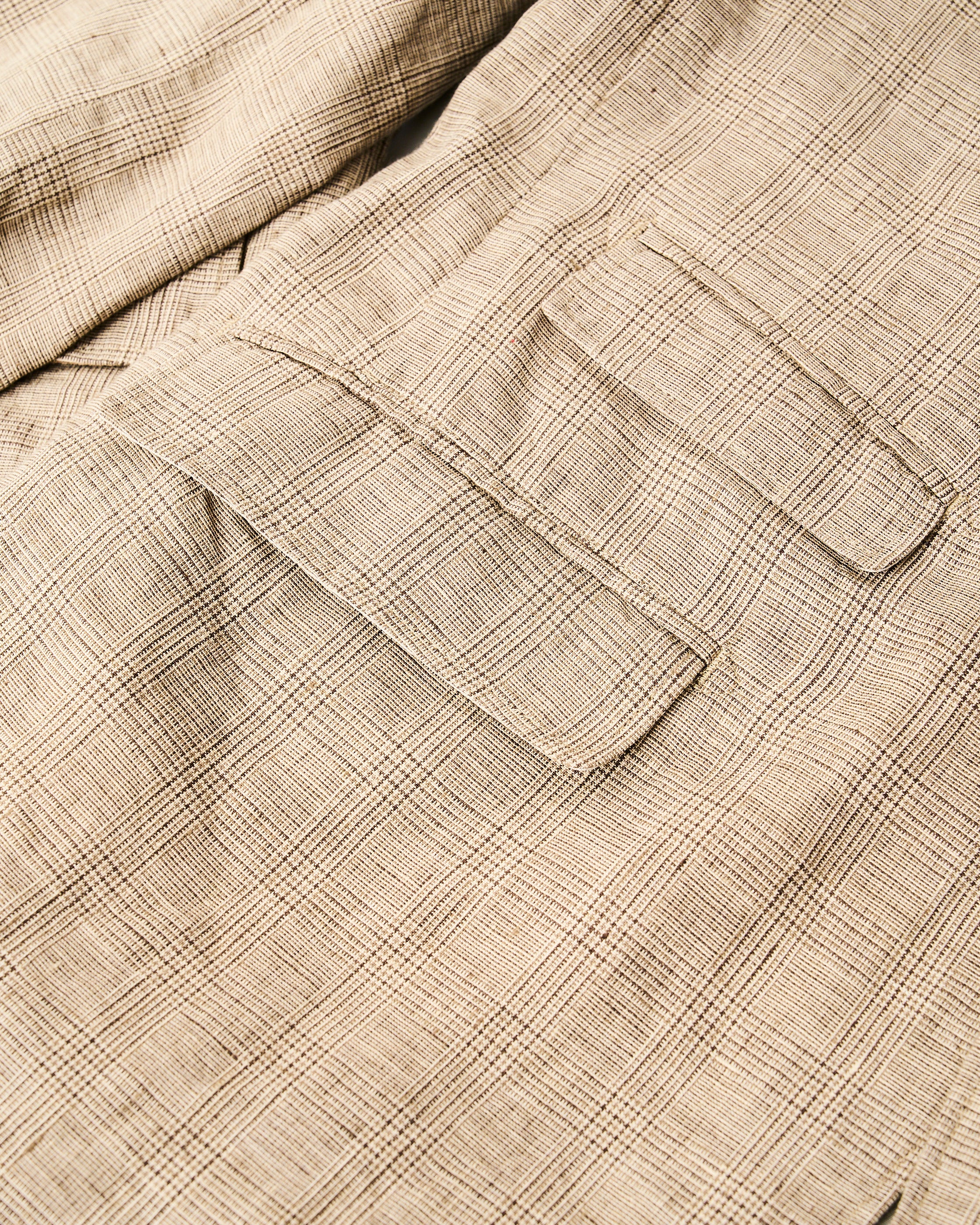
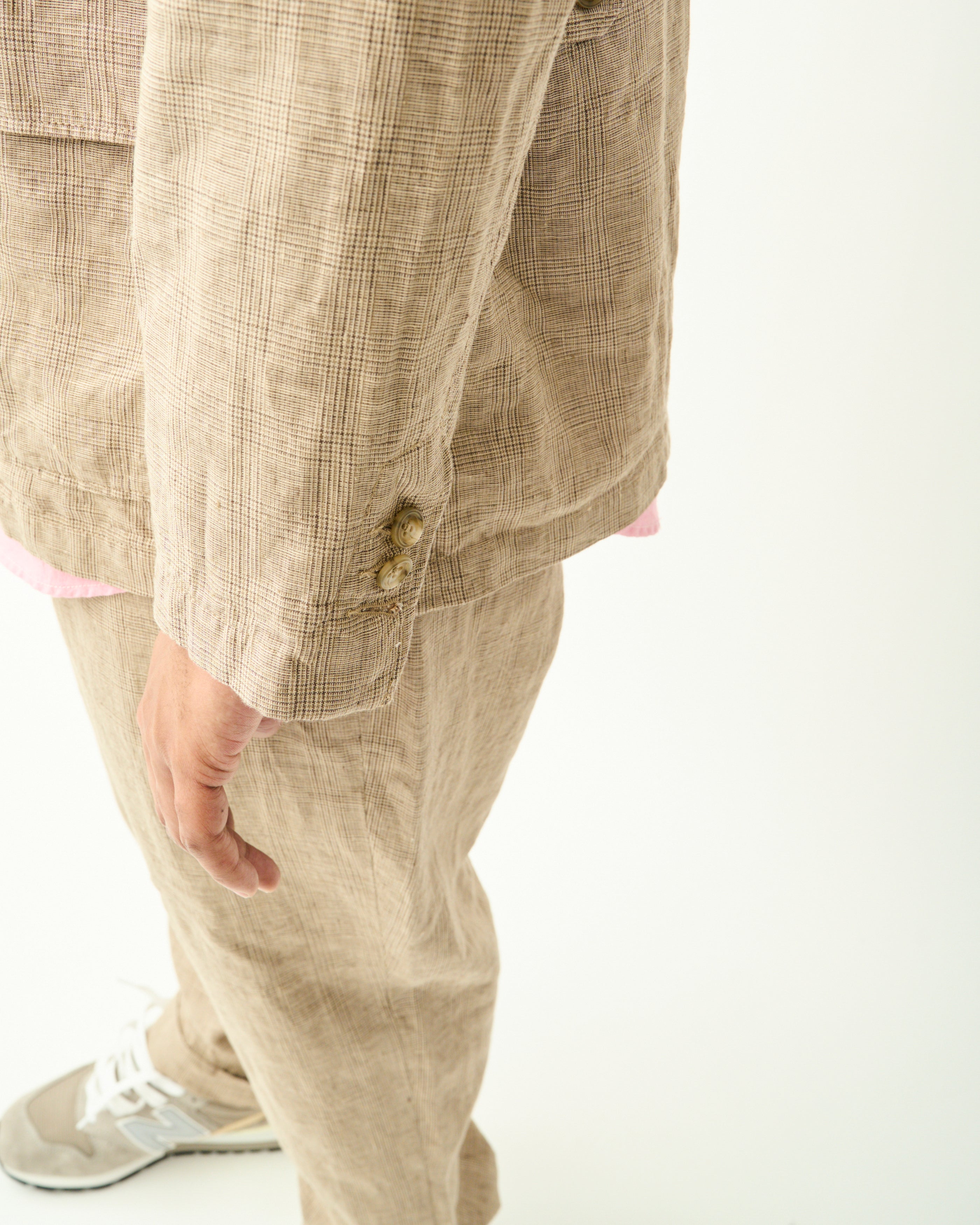
The Engineered Garments Beige Linen Glen Plaid is featured in the production of the following items for Spring Summer 2024:
Andover Jacket
Andover Pant
Butterfly Bow Tie
Carlyle Pant
Dayton Shirt
Fowl Vest
Liner Vest
Loiter Jacket
Neck Tie




















